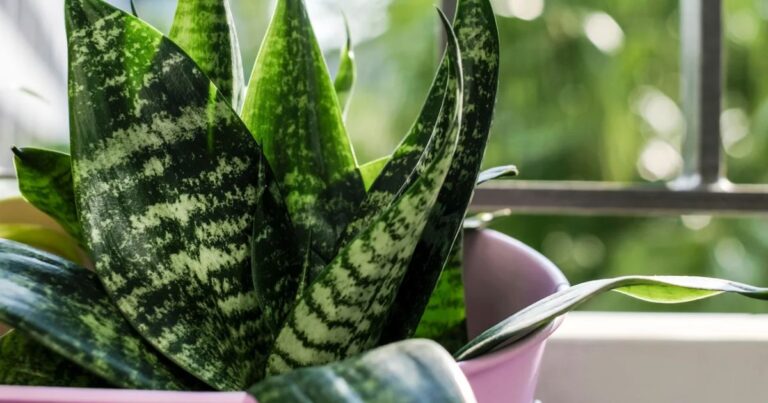Trailing Rosemary Plant – Planting, Care, Uses And Seeds
Enter the trailing rosemary plant, a botanical gem that not only enhances your outdoor space but also adds a touch of culinary magic to your kitchen. Known for its distinctive flavor and resilience, this versatile herb thrives both in pots and gardens, effortlessly bringing beauty and utility together.
In this article, we’ll dive deep into the art of planting and nurturing trailing rosemary, exploring tips for care that ensure it flourishes throughout the seasons. we’ll unlock its myriad uses, from elevating everyday dishes to serving as a natural remedy and even discuss how to propagate new plants from seeds.
What Is A Trailing Rosemary Plant?
Trailing rosemary, also known as Rosmarinus officinalis ‘Prostratus,’ is a stunning variant of the classic herb that adds both beauty and functionality to gardens and culinary spaces alike.

Unlike its upright counterparts, this variety gracefully spills over containers and hanging baskets, creating an enchanting cascade of aromatic green foliage. Its slender stems can stretch several feet long, making it ideal for those seeking to soften hardscapes or add texture to vertical gardening designs.
How To Plant Trailing Rosemary?
Choose a sunny spot with well-draining soil, as rosemary thrives in conditions that mimic its Mediterranean origins. Incorporating organic matter, such as compost or aged manure, not only enriches the soil but also improves drainage, essential for preventing root rot.
For an enchanting visual impact, group several trailing rosemary plants together to create cascading effects along walls or hanging planters. Their delicate blue flowers will add color and attract pollinators like bees and butterflies, a delightful bonus for any gardener.
Trim the plants regularly; this encourages bushier growth and keeps them looking tidy while promoting even more robust foliage for culinary uses.
Trailing Rosemary Seeds
Trailing rosemary, with its delicate, cascading branches and aromatic foliage, is a delightful addition to any garden or balcony space. As the seeds germinate and grow, gardeners can enjoy not just a culinary herb but also a stunning visual element that softens hardscapes and adds texture.
Trailing types thrive in containers and hanging baskets, allowing for creative planting arrangements that bring vibrant life to both indoor and outdoor settings.

Caring for trailing rosemary seeds involves an understanding of their preferences for well-draining soil and bright sunlight. When sown indoors or outdoors in early spring, proper spacing ensures each plant has enough airflow to prevent fungal diseases common in humid conditions.
Trailing Rosemary Size And Height
Trailing rosemary, presents a unique charm in both gardens and containers with its distinct growth pattern. This fragrant herb typically grows to about 30-50 cm per year tall but can extend outward up to 1-2 metres when allowed to sprawl.
Its beautiful, cascading branches make it an ideal choice for hanging baskets or cascading over walls, creating a stunning display of soft green foliage accentuated by violet-blue flowers in spring.
One captivating aspect of trailing rosemary is its versatility regarding size management. Gardeners can influence its growth through pruning techniques; regular trimming encourages denser foliage and more vibrant flower production.
Trailing Rosemary Growing
Trailing rosemary cascades gracefully over edges and hanging planters, creating a lush green overflow that can soften hardscapes or accentuate window boxes. This unique growing habit allows for creative landscaping opportunities; picture it spilling over retaining walls or cascading down Stone Garden steps, providing texture and life where traditional plants might falter.
In addition to its visual charm, trailing rosemary is fragrant and resilient, ideal for gardeners seeking low-maintenance options. Its aromatic leaves can enhance culinary creations while also attracting beneficial pollinators such as bees and butterflies when planted in clusters.
Trailing Rosemary Care
Trailing rosemary, with its cascading stems and aromatic foliage, is a stunning addition to any garden or indoor space. One of the most critical aspects of caring for this resilient herb is providing the right balance of sunlight and water.
While it thrives in full sun, meaning at least six hours of direct light daily, it can become leggy if overwatered. A well-draining pot is essential; consider using a mix of potting soil combined with sand or perlite to enhance drainage.

Fertilization plays a nuanced role in trailing rosemary care. Trailing rosemary flourishes on neglect, less is often more when it comes to nutrients. A light application of organic fertilizer in early spring can give your plants a gentle boost without overwhelming them.
What Is Trailing Rosemary Uses And Benefits?
- Culinary Versatility: This fragrant herb enhances a variety of dishes, from roasted meats to vegetable medleys, offering a robust flavor that transforms ordinary recipes.
- Aromatic Therapy: The essential oils from trailing rosemary can elevate your mood and promote relaxation when used in aromatherapy practices or diffusers.
- Digestive Aid: Known to stimulate bile production, trailing rosemary may assist in digestion and alleviate common gastrointestinal discomforts.
- Natural Preservative: Its antioxidant properties help extend the shelf life of foods, making it an excellent addition to marinades for preserving freshness.
- Combating Stress: Studies suggest that inhaling rosemary aroma can reduce cortisol levels, helping manage stress more effectively during hectic times.
- Hair Health Advocate: Infused oils made from this herb may strengthen hair follicles and combat dandruff, promoting healthier hair growth naturally.
- Anti-Inflammatory Properties: Rich in rosmarinic acid, trailing rosemary provides anti-inflammatory effects, which may be beneficial for chronic conditions like arthritis.
- Garden Beauty and Practicality: Beyond its functional uses, the plant’s striking appearance makes it an attractive groundcover or hanging plant in gardens or containers, a perfect blend of beauty and utility!
Tips And Fun Facts Of Trailing Rosemary
- Perfect for Containers: Trailing rosemary is an ideal candidate for container gardening. Its cascading nature not only makes it visually appealing, but it also allows you to move the plant to sunlit spots as needed.
- Drought Tolerance: This herb thrives in well-draining soil and is drought-resistant once established. Many gardeners are surprised to find that too much water can be more detrimental than too little!
- Culinary Delight: Beyond its ornamental value, trailing rosemary packs a punch in cooking. Use the tender leaves to infuse oils, flavor roasted meats, or elevate your favorite soups and stews.
- Medicinal Uses: Traditionally used for various ailments like memory enhancement and digestion support, trailing rosemary’s potential health benefits make it a great addition not just in gardens but also in herbal remedies.
Trailing Rosemary Vs Giant Amaryllis Plant
Trailing rosemary is a fragrant herb known for its lush, cascading growth habit. Its muted green foliage not only enhances culinary dishes but also attracts pollinators to your garden, creating a lively ecosystem. This versatile plant thrives in well-drained soil and sunny locations, making it ideal for hanging baskets or as ground cover in rock gardens.
The giant amaryllis plant captivates with its bold, trumpet-shaped blooms that can reach stunning heights of up to three feet. These flowers elevate any indoor space or garden arrangement with their vibrant colors, ranging from reds to whites, and serve as an exquisite focal point during winter months when other blooms are scarce.
Conclusion
The trailing rosemary plant is a versatile and hardy addition to any garden or indoor space, offering both aesthetic beauty and practical uses. With proper planting techniques, regular care, and a little creativity, you can enjoy its fragrant foliage and delightful blooms throughout the year.
Whether you’re using it in culinary dishes, crafting natural remedies, or simply enhancing your landscape design, trailing rosemary proves to be an invaluable asset. With its ability to thrive in various conditions and attract beneficial insects, this plant is perfect for gardeners of all skill levels.







